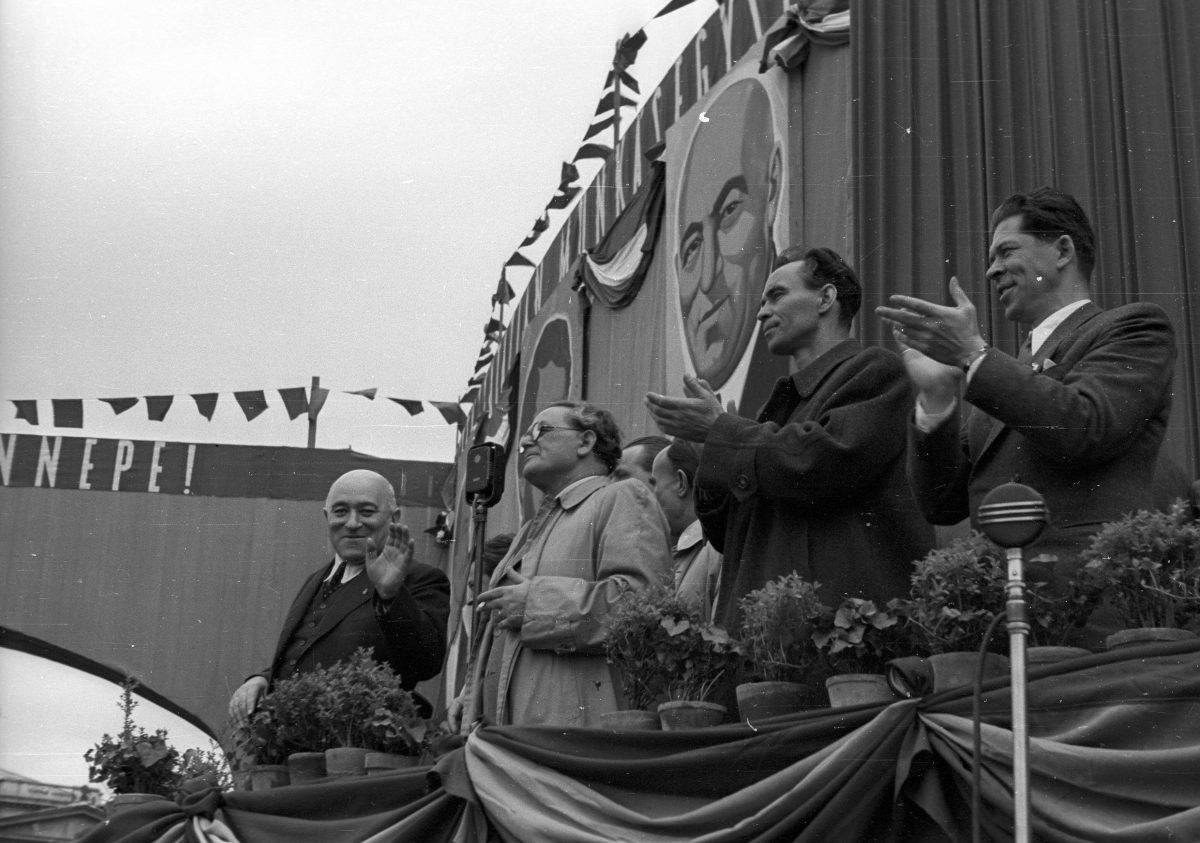The Hungarian Revolution of 1956 began on October 23, but the patriotism and anti-communist sentiment did not begin overnight.
In between the Soviet takeover of Hungary in 1945 and the Revolution of 1956, hundreds of reasons to hate the communists arose. There are several factors that contributed to the timing of the revolution, but none so puzzling as László Rajk’s [pronounced Rike] reburial ceremony on October 6, 1956.
Firstly, Rajk was a communist and he was hated during his life. Rajk helped organize the despised secret police, he held several positions within the government including the Minister of Foreign Affairs, Minister of Interior, and a member of the High National Council. He prohibited (or outright liquidated) almost 1,500 religious, nationalist, and maverick groups and establishments to quash Hungarian pride and destroy their connection with the church.
Rajk even initiated some of the first Hungarian show trials; trials in which the judge and jury had already decided that the defendant was guilty without regard to evidence. Show trials were basically theatrical productions with rehearsed and memorized lines, they were popularized in Russia and implemented all over the Soviet Union. The communists falsely imprisoned thousands of people with these trials, including Hungarian priests and church leaders.
Rajk was popular among the communists. However, when Mátyás Rákosi, Hungarian Prime Minister, felt threatened by Rajk’s power and influence, he accused Rajk of being a western spy. They arrested him, held him in a prison camp, put him on a show trial, and executed him on October 15, 1949. The communists’ constant betrayal of their own comrades (Rajk was not the only one) put a bitter taste in the mouths of many Hungarians.

Rajk’s wife, Julia, heard his execution from her prison cell while she was imprisoned in the same facility. Later, she petitioned the government to give Rajk a state funeral and to have his body reburied in the Kerepesi Cemetery, the last resting place for Hungarian heroes. Initially, the government refused and offered her a payout of a handsome amount of money instead. Julia refused the money, she only wanted respect for her late husband.
He had become a victim of the communist regime and thus was transformed into a patriotic hero. He went from being a despised communist figure to a martyr. Hungarians did not necessarily forget his crimes, but they ignored his corruption and let him ascend as a national hero.
He was reburied on October 6, 1956, and about 100,000 people attended to mourn Rajk in the pouring rain. There was an overwhelming sense of nationalism during and after the service. Proud Hungarians yearned for change; the fire of revolution was lit.
After the service, about 500 students marched to the Batthyány monument in Buda (one side of the famed city of Budapest) to protest against the communists. The monument was a memorial to the first Prime Minister of Hungary whom the Austrians executed in 1849, after the Hungarian Revolution of 1848. The student demonstration was mostly shouting anti-communist rhetoric, and it was quickly deescalated by police. The little protest foreshadowed what would transpire in just a few short weeks when the Hungarian Revolution of 1956 began on October 23.
Sources:
Korda, Michael. Journey to a Revolution: A Personal Memoir and History of the Hungarian Revolution of 1956. HarperCollins, New York, 2006.
Mertz, Dawn-Eve. Young Men Go West: The Hungarian Revolution of 1956 and One Teenager’s Risky Escape. Kleo Press, 2024.
Molnár, Miklós. A Concise History of Hungary. Cambridge University Press, 2001.
Sebestyen, Victor. Twelve Days: The Story of the 1956 Hungarian Revolution. Pantheon Books, 2006.





